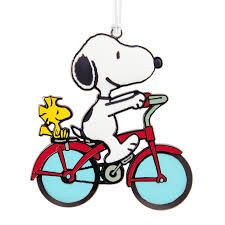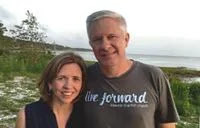Today I will invoke the Howard Cosell Rule. That is to say, I am going to write about something that has little, if anything, to do with bicycles or bicycling.
You've heard about it by now: Some time before midnight on Saturday, a young man dressed in a military-style flak jacket and armed with a long rifle and a handgun--both of which he purchased-- entered Club Q, an LGBTQ night spot in Colorado Springs.
By the time a couple of patrons subdued him, he'd killed five other patrons and wounded 17 others. At least one of the victims, Ashley Green Paugh, wasn't even a member of the LGBTQ community: She was with a friend with whom she'd spent the day. Now there is a girl without a mother and a man without a wife--in addition to the partners, familys and friends who no longer have Daniel Aston, Kelly Loving, Raymond Green Vance and Derrick Rump in their lives.
The last I heard, authorities were "trying to determine whether" the slaughter was a "hate crime." Even if the suspect, Anderson Lee Aldrich, didn't know that Sunday was Transgender Day of Remembrance, and some patrons were in Club Q to commemorate it, I don't know how any other motive can be ascribed to him. After all, if he wanted to kill people just because, there were plenty of other venues he could have chosen, especially on a Saturday night.
As if it weren't enough of a terrible irony or coincidence that it happened on the eve of TDoR or that one of the victims is named "Loving," it turns out that Aldrich, who committed one of the most lawless acts possible, is the grandson of an outgoing California legislator. Randy Voepel, who lost his re-election bid earlier this month, reacted to the January 6 insurrection with this: "This is Lexington and Concord. First shots fired against tyranny." He added, "Tyranny will follow in the aftermath of the Biden swear in (sic) on January 20."
Now, I know some will say that there isn't a direct link between grandfather and grandson when it comes to attitudes about using violence. But it's hard not to think that Voepel is at least emblematic of some sort of value Aldrich imbibed. Oh, and in June 2021, Aldrich was arrested for making a bomb threat in his mother's home. Perhaps neither his grandfather nor anyone else in his family taught him that doing such a thing was OK, but I can't help but to think that from somewhere or someone in his environment--whether in his family, community or elsewhere--he got the idea that it's OK to use force and threats thereof to get his way. After all, even the crankiest and most recalcitrant baby isn't born knowing how to do such things.
That he made the threat in his mother's house has been mentioned. So has the fact that, in spite of doing so, he evaded Colorado's "red flag" law, which is supposed to prevent people with criminal convictions from purchasing firearms. But the media has only hinted at other issues that the slaughter highlights.
 |
| Photo by Scott Olson, for Getty Images |
One of those issues is that a place like Colorado Springs needs a place like Club Q. I have spent exactly one day in the city: I was passing through on my way to someplace else. The city always touts its proximity to Pike's Peak, which is visible from just about everywhere. I must admit that made me long, for a moment, to live there, if for no other reason that I'd probably be a better cyclist--or, at least, a better climber--than I am.
But I also knew that, had I stayed in Colorado Springs, I would be living a very different life. Actually, I might not be living at all: Aside from being a cyclist, it would be very difficult to be the person I am. Like many "blue" or "swing" states, Colorado has its red, as in redneck, areas where some have longings like the one a taxi driver expressed to me: to be in Alaska, Montana, Wyoming or some other place where people live, as he said, "like real Americans."
Colorado Springs is in that red zone. But its conservativism is amplified by some of the institutions in and around the city. The most prominent and visible is the United States Air Force Academy. There are also several military bases nearby. And the town is also home to Focus on the Family which, like other right-wing Christian organizations, uses its "focus" on the "family" as a smokescreen for a homo- and trans-phobic, misogynistic, anti-choice agenda. Several people who were interviewed, including a few lifelong residents, confirm the impression that I have about the city.
As in any place else, kids grow up in the closet. For them, a place like Club Q is the only place where they can safely be themselves. And there are adult LGBTQ people in places like Colorado Springs because of work or family ties--or simply because they like living in the mountains. Where else would they meet people in similar circumstances but in a place like Club Q.
Anyway, I couldn't think of much else besides the tragedy in Colorado Springs. The most terrifying thought of all, though, is that it probably won't be the last.
















